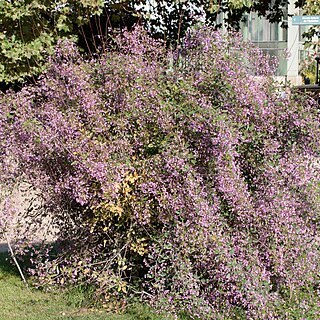A shrub. It grows 1-2 m tall. Young branches can be hairy. The leaf stalks are 1-5 cm long. There are leaflets along the stalk and the end one is 1-7 cm long by 1-4 cm wide. The flowers are in groups 3-15 cm long. They are purple or pinkish white. The pod is obliquely oval and 9-15 mm long by 4-5 mm wide. The seeds are reddish brown and kidney shaped. They are 3-5 mm long by 2-3 mm wide.

